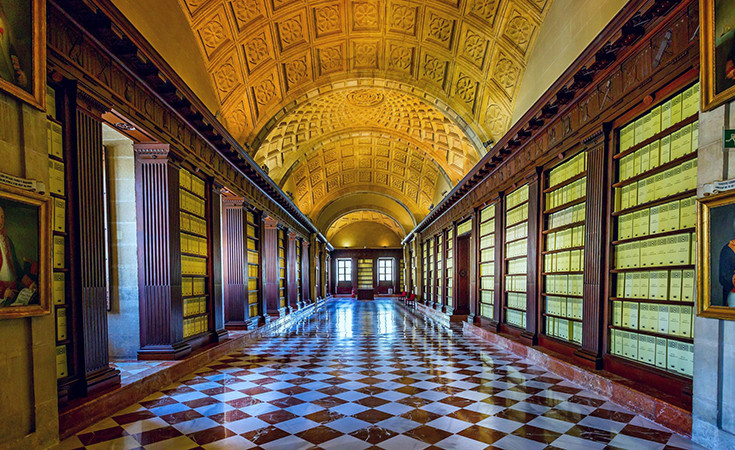
The General Archives of India are housed in the old Seville Mercantile Exchange and contain very important documents that present the history of the Spanish Empire. The building in which the archive is located is a typical example of Spanish architecture and its designer was Juan de Herrera. This building is a very important historical building that houses very important historical documents, and since 1987 the building has been on the UNESCO World Cultural Heritage List. until before the construction of this building, they did their work in the cold recesses inside the Seville Cathedral. The building of the general archive was built on two floors with an overhanging balustrade and rusticated obelisks at each corner. This building does not have any decorations, it is quite simple with soft reliefs, pillars and decorative wreaths on each window.
There is an inscription on the building that testifies that the building was habitable already in 1598. It was renovated in the 17th century, and those works were directed by the then archbishop Juan de Zumaraga. Every archival resource that visitors want to look at and explore is located in another building, across the street from the main building. The idea of unifying all documentation about the empire "across the ocean" occurred at the end of the 18th century, according to the decree of Charles III. Historian Juan Bautista Muñoz also did part of the work.
The first documents about the Spanish colonies in America and India arrived in the General Archives in 1785. According to the design of Lucas Cintara, a large marble staircase was added to the building. This building is not just an ordinary building in which important documents are placed, but in a way it is also a kind of museum of the rich Spanish colonial history. In the general archive today there are 9 kilometers of wooden shelves in 43,000 volumes, and as many as 80 million pages that are the production of the Spanish administration. In one of the corridors of the building there is a cannon from the 17th century. And archival documentation is divided into the 16th, 17th, 18th and 19th centuries. Since 2005, as many as 15,000 pages are in the process of digitalization.
Entrance is free, and it is forbidden to photograph the archived documents.
Working hours from 09:30 to 16:30 every day.
Author of the text:

Maja Glavaš, Bachelor with Honours in Communicology. Works in Tourism.
Contact: [email protected]; instagram: travel_europe1